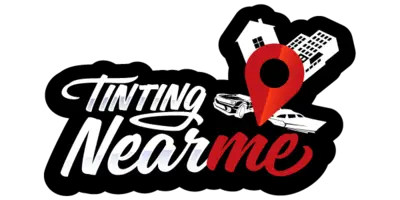2024 Vermont Legal Tint Laws Explained
Imagine you’re cruising down Burlington’s Main Street in your newly tinted sedan, but then, you’re flagged down by a local officer; apparently, your window tint doesn’t meet the 2024 Vermont legal tint laws. Now, you’re left wondering how the tint laws in Vermont could affect your beloved vehicle. To avoid such predicaments, it’s crucial for you to be well-versed in the specifics of these laws – from window tint darkness classifications to reflectivity regulations. So, why not spare a moment to familiarize yourself? Stick around, as we walk you through the need-to-know aspects of Vermont’s 2024 tint laws.
The information on myeyerx.net isn’t legal advice; consider it a starting point. Always verify with local and state authorities, as the final decision rests with you. We are not lawyers. For specific legal guidance, we can refer you to legal experts. Remember, knowledge of both state and local laws is essential, and even law enforcement might not be fully updated. We aim for accuracy but advise double-checking for the latest regulations.
Key Takeaways
Key Takeaways
Key Takeaways
- Sedans in Vermont must have a minimum of 50% Visible Light Transmission (VLT) for front side windows.
- Back side and rear windows of sedans can have any tint darkness.
- SUVs and vans have the same rules for front side windows as sedans, but no restrictions for back side and rear windows.
- Vermont prohibits mirrored or metallic appearance on windows and requires non-reflective tint on front side windows of all vehicles.
Need Help Getting a Medical Exemption?
Our Doctors Are Here For You!
MyEyeRx was established with the objective of simplifying the complex landscape of state regulations pertaining to legal tint medical exemptions for window tinting. For individuals seeking to navigate these regulations without resorting to a do-it-yourself approach, we offer a streamlined solution. Our team includes qualified medical professionals who are available to conduct consultations via Zoom. These sessions are designed to assess your eligibility for a medical exemption, ensuring a personalized and efficient process for acquiring the necessary documentation.
Understanding Vermont Tint Laws
Ever wondered about the specifics of Vermont’s window tint laws? You’re in the right place to explore the ins and outs of Vermont Tint Laws. The state of Vermont sets clear guidelines for car window tinting, ensuring safety and visibility for all road users.
Firstly, Vermont window tinting laws are determined by Visible Light Transmission (VLT) percentages. This refers to the amount of light that can pass through your tinted windows. For sedans, the law requires a minimum of 50% VLT for front side windows and there’s no limit for back side and rear windows – they can have any tint darkness. For SUVs and vans, the front side windows must also have a minimum of 50% VLT, but again, the back side and rear windows can have any darkness.
In addition to tint darkness, Vermont Tint Laws also regulate the level of reflection on your tinted windows. The state prohibits any mirrored or metallic appearance on both front and back side windows. This means that your car tint must not be excessively shiny or reflective.
If you’re considering getting your car windows tinted, remember that the state of Vermont requires dual side mirrors if your back window is tinted. And while there are no restrictions on tint colors, there are no specific certification or labeling requirements for window tint.
Window Tint Darkness Classification
Understanding the classification of window tint darkness is crucial as it directly affects the Visible Light Transmission (VLT) percentage, which is a key determinant in Vermont’s tint laws. To comply with Vermont window tint rules, you need to be aware of the percentage of visible light allowed through your car’s windows. This percentage is affected by the type of window tint film you use, and the Vermont Department of Motor Vehicles (DMV) regulates it strictly.
These regulations vary for different types of vehicles and windows:
- For sedans, the front side windows should allow more than 32% of light in, but you’re free to choose the darkness for the back side and rear windows.
- SUVs and vans have the same rules except the back side windows and rear window can be tinted to any darkness.
- Windshields can have non-reflective tint above the manufacturer’s AS-1 line.
Tinting your car windows not only provides a sleek look but also protects you from harmful UV rays. However, it’s important to stay within Vermont’s window tint laws to avoid any penalties. The rules don’t restrict tint colors, and you don’t need to get your tint certified by the film manufacturers. However, if you tint your back window, dual side mirrors are required.
Vermont also provides medical exemptions for people with certain conditions. If you fall into this category, you’re allowed to have darker tints than usual. Make sure you understand these Car Window Tint rules, so your tinting efforts don’t run afoul of the law.
Reflectivity Regulations in Vermont
While you’re focusing on the darkness of your tint, it’s equally important to consider Vermont’s regulations on window tint reflectivity. Reflectivity regulations in Vermont aim to control the mirrored or metallic appearance of your vehicle’s windows, which could potentially be distracting or dangerous for other drivers on the road.
The law in Vermont stipulates that non-reflective tint is allowed on the front side windows of your vehicle. This means your tint can’t have that shiny, mirrored appearance that some tints come with. The same rule applies for the back side windows of both sedans and SUVs or vans. This regulation ensures that window reflection doesn’t become a hazard on Vermont’s roads.
Vermont tinting rules and regulations are monitored and enforced by the DMV or law enforcement. If you choose to tint your windows, it’s crucial to ensure you’re in compliance with these reflectivity regulations. Non-compliance can result in penalties and fines.
Legal experts recommend thoroughly understanding the intricacies of the law before proceeding with tinting your vehicle’s windows. It’s also recommended to consult with a professional tinting service, as they’re well-versed in the regulations in Vermont and can guide you in the right direction.
Additional Tinting Rules and Regulations
In addition to reflectivity regulations, there are several other rules to keep in mind when considering window tinting for your vehicle in Vermont. The 2024 Vermont legal tint laws explained in this guide will help you identify legal tinting and ensure compliance.
Firstly, the Visible Light Transmission (VLT) is a crucial factor. Vermont permits non-reflective tint above the AS-1 line on windshields but doesn’t allow any tinting on the front side windows. However, any tint can be applied to the rear windows and back side windows, as per your preference.
Secondly, notice that: * Film manufacturers don’t need to certify the film used. * Dual side mirrors are required if the back window is tinted. * The state doesn’t restrict tint colors.
These additional tinting rules and regulations are essential to remember while getting your vehicle’s windows tinted.
Lastly, Vermont also offers window tint medical exemptions. If you or a regular passenger in your vehicle suffers from a medical condition that requires additional window tinting, you may apply for an exemption. However, you must carry the certification at all times in the vehicle.
Medical Exemption Information
If you’re considering darker window tints due to medical reasons, Vermont’s window tint laws offer an exemption, provided you obtain a written certification from an optometrist or physician. This medical exemption permit can be accessed as a .pdf document from the Vermont Department of Motor Vehicles. The permit is essential, as it allows the use of darker tint than what is normally permitted under Vermont’s legal tinting regulations.
You will need to certify your medical condition that necessitates the use of darker window tint. The process involves detailing your condition to your healthcare professional who would then determine if your case is valid for the exemption. The state of Vermont does not prohibit the usage of any tint for medical reasons as long as it’s certified by a licensed practitioner.
If your medical exemption permit is approved, you are allowed to apply darker tint to your vehicle’s windows, including the back window. However, it’s important to remember that while the tint exemption in Vermont allows the use of darker tint, it does not completely waive the need for legal tinting. Legal tinting is required to ensure that the tint does not excessively impede visibility, posing a risk to other road users.
If you would like to bypass having to fill out paperwork and dealing with the state, we can help you get an online medical exemption for window tint in Vermont.

Don't want the hassle? Let us take care of your exemption for you!
MyEyeRx.net is here to help you streamlines the process of obtaining a medical exemption for window tint online. Explore our services to easily transform your window tint from non-compliant to legally approved!
Because of the differences in each of the 50 states, we’ve crafted distinct guides for securing window tint medical exemptions for each of the individual states.

Toriano (Tory) Dewberry
Become one of the many satisfied clients Toriano has assisted in obtaining a medical exemption without stepping out of their homes. Click the button below to begin and discover if you're eligible for a medical exemption.

Toriano (Tory) Dewberry
Become one of the many satisfied clients Toriano has assisted in obtaining a medical exemption without stepping out of their homes. Click the button below to begin and discover if you're eligible for a medical exemption.
Frequently Asked Questions (FAQ'S)
What Is the Darkest Tint Allowed?
In Vermont, you’re allowed to have any darkness of tint on your back side and rear windows. However, front side windows can’t have any tint. It’s important to consider tint types, installation, and costs. Tint benefits include UV protection and privacy, but remember, too dark could raise safety concerns. Always maintain your tint properly and ensure it meets Vermont’s regulations. If needed, you can also opt for tint removal.
What Percentage Is Darkest Legal Tint?
In Vermont, the darkest legal tint isn’t specified, letting you choose any level for the rear and back side windows. However, your front side windows must be clear. When considering tint installation, remember the benefits of UV protection but also consider visibility issues, safety, privacy concerns, and potential maintenance. Check tint pricing and warranties, and remember, if needed, tint removal is an option.
What State Has the Loosest Tint Laws?
You’re curious about which state has the loosest tint laws. It’s not an easy answer as regulations vary widely. Some states, like Vermont, have strict rules on front side windows but not on rear. Others may offer medical exceptions or different rules for SUVs and sedans. Tint types, installation methods, and associated costs also play a part. It’s crucial to research the specifics of tint safety, penalties, benefits, and removal in your particular state.
What Is the Legal Tint in Nh?
In New Hampshire, you’re allowed to have your windows tinted, but there are specific NH Tint Regulations to follow. Your windshield can’t be tinted, but other windows can have a tint that allows at least 35% light in. It’s important to ensure the Tinting Process is done correctly, as improper tinting can impact visibility, which is a key aspect of Tinted Windows Safety. Non-compliance with NH Vehicle Laws can result in Tint Law Penalties.

MyeyeRx.net
Ensuring your tint is not just about style, but legality and safety.
Let us guide you through the maze of state regulations to legal clarity.

Conclusion
Navigating Vermont’s tint laws can be a bit of a maze, but remember: knowledge is power. Stay mindful of the regulations around tint darkness and reflectivity, and don’t forget about the additional rules if you’re considering a darker tint due to a medical condition. After all, it’s better to be safe than sorry. With this information, you’re well-equipped to make informed decisions about your vehicle’s window tinting.
Looking to find a Reputable Window Tint Company In Vermont?
Checkout Tintingnearme.com to Find A Local Tint Shop
After learning about window tint laws, the next step is to find a trusted local window tinting shop. Tinting Near Me offers a selection of reputable shops knowledgeable in both quality tinting and legal standards, including medical exemptions.
Choose a shop from their list for expert service that meets legal requirements and enhances your vehicle’s compliance and protection.


